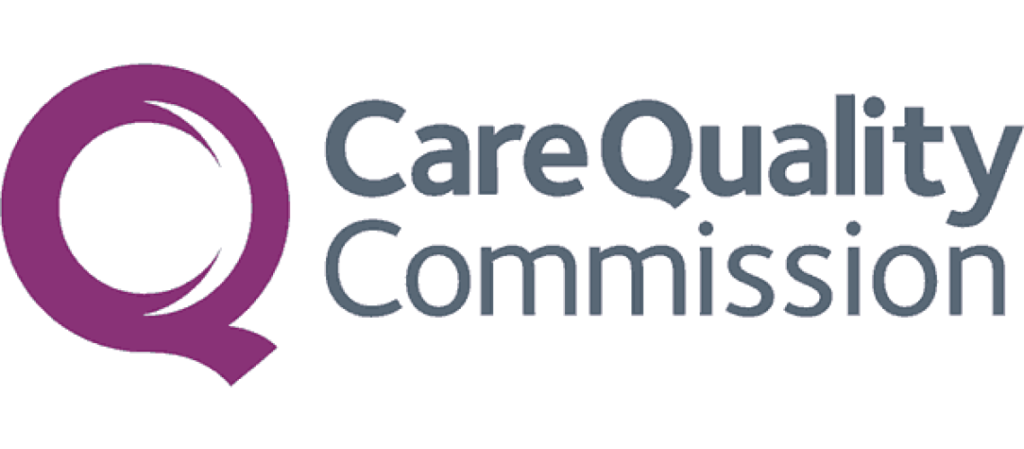Liquid cartilage injections
Liquid cartilage injections involve injecting a collagen-based solution directly into a damaged joint. This offers advanced cartilage repair, promoting natural healing and regeneration.

At a glance
About
Moderately-invasive treatment for cartilage defects, carried out under anaesthetic
Effective
Referrals
Not needed
Booking
Instant-book option available
Cost
-
Lincolnshire £ 2500
Nature of liquid cartilage injections
Liquid cartilage injections are a non-surgical treatment designed to restore damaged knee cartilage and relieve pain. These injections contain a synthetic or biologically derived substance designed to mimic natural cartilage, providing lubrication and cushioning in the joint. By replenishing the cartilage, liquid cartilage injections help reduce friction, improve joint movement, and slow further degeneration.
Common uses of liquid cartilage injections
Knee joint problems treated with liquid cartilage injections are typically caused by:
Osteoarthritis: Cartilage wear leads to pain, stiffness, and reduced mobility.
Previous knee injuries: Trauma to the knee can result in cartilage damage and joint instability.
Age-related degeneration: As we age, cartilage naturally deteriorates, causing joint discomfort.
Overuse: Repetitive activities can accelerate cartilage breakdown, leading to pain and inflammation.
Chronic inflammation: Long-term inflammation can lead to cartilage degradation and knee joint issues.
Diagnosis for liquid cartilage injections
Diagnosis for liquid cartilage injections starts with a clinical evaluation to assess knee pain, swelling, and reduced range of motion. Imaging tests like X-rays or MRIs help identify cartilage damage, joint space narrowing, and other knee issues.
If conservative treatments fail and cartilage damage is confirmed, liquid cartilage injections may help restore joint function and relieve pain, especially in osteoarthritis or cartilage degeneration cases.
Suitable for
Degenerative joint disease (osteoarthritis)

Cartilage tears

Treatment overview
Liquid cartilage injections aim to replace parts of the joint that have been damaged due to injury or arthritis. This treatment can be done through an injection or, in some cases, surgery (such as arthroscopy), depending on the severity of the damage.
The process involves gaining access to the affected joint by arthroscopy (keyhole surgery). Once the defect is found, the collagen matrix is introduced. This matrix acts like scaffolding, stimulating and providing support for the new, healthy cartilage to grow around.
Liquid cartilage injections are a great solution for those with ongoing knee or ankle pain, who are looking for a low-risk, fast healing time procedure.

Benefits

Minimally-invasive, can be performed via keyhole surgery

Ideal for small and difficult-to-reach injures/defects

Faster recovery time (compared to surgical treatments)

Helps restore the joint’s normal function
How to Pay
We offer a range of flexible payment options to make your treatment experience smooth and stress-free.
Paying for Yourself (Preferred Option)
Most patients choose to self-fund their treatment. We accept:
- Bank Transfers
- Credit/Debit Cards
- Cash (in person only)
Instalment Plans
We’ve partnered with GoCardless to offer interest-free instalment options. You can easily set up a Direct Debit to spread the cost of your treatment over time.
Finance Options
Looking for a financing plan? You can apply through Kandoo, our trusted finance partner.
- Instant online decision
- No impact on your credit score
- Multiple lenders for competitive rates
Private Medical Insurance (Limited Availability)
We work with a small number of approved insurance providers. However, due to restrictions from many insurers, not all treatments are covered. Please check with your insurer and speak to our team before booking to avoid disappointment.
The booking process
Online booking/call
Use our Calendly to book an initial consultation, or give us a call.
01
consultation
If you are a new patient, our doctors might arrange a consultation before treatment.
02
Treatment
You will be booked in for treatment.
03
Follow up
Our doctors might arrange a follow-up consultation, to check your response to treatment.
04
Discharge
Once your doctor is happy with your recovery, you will be discharged. After discharge, we are always here for further questions or support, should you need it.
05
Frequently asked questions
How long until I notice results?
You should notice improvements in as few as 4-6 weeks, with benefits lasting as long as 6-12 months in most cases.
Several factors will impact the effectiveness and overall timeline, including how badly the cartilage is damaged, your general health and age, as well as your diet, lifestyle and adherence to aftercare following your treatment.
Are there any side effects?
Like every injection, one of the risks of liquid cartilage therapy is infection. However, this is rare due to the sterile techniques and environment we practice in. There is also a very small chance you may be allergic to the materials used in the injection.
Who is suitable for Liquid Cartilage Injections?
What are Liquid Cartilage Injections and how do they work?
Are there any payment or finance options available for this treatment?
Injection Treatment Comparison
Explore the key differences between leading injection therapies used in joint, tendon, and cartilage care. Compare their effectiveness, uses, recovery time, and potential drawbacks to help guide your treatment decisions.
Injection Type | Best For | Effectiveness (⭐ out of 5) | What It Does | Recovery Time | Downside |
|---|
Hyaluronic Acid (HA) Injection
Injection Type | Best For | Effectiveness (⭐ out of 5) | What It Does | Recovery Time | Downside |
|---|---|---|---|---|---|
Hyaluronic Acid (HA) Injection | Mild to moderate knee osteoarthritis, joint lubrication | ⭐⭐⭐ | Lubricates joints, reduces friction, and relieves pain in osteoarthritis. | Immediate return to daily activities, effects last 3-12 months.
| Short-term relief, effects wear off over time; does not regenerate cartilage.
|
Cartilage Matrix Injection
Injection Type | Best For | Effectiveness (⭐ out of 5) | What It Does | Recovery Time | Downside |
|---|---|---|---|---|---|
Cartilage Matrix Injection | Moderate to severe cartilage damage, osteoarthritis, surgical augmentation | ⭐⭐⭐⭐⭐ | Provides a structural scaffold to support cartilage repair and regeneration. | Minimal downtime, improvement in 4-6 weeks, lasting 6-12 months. | May lead to mild inflammation or combination with other therapies for best results |
Arthrosamid Injection (Hydrogel)
Injection Type | Best For | Effectiveness (⭐ out of 5) | What It Does | Recovery Time | Downside |
|---|---|---|---|---|---|
PRP (Platelet-Rich Plasma) Injection | Tendon injuries, mild arthritis, post-surgical healing. | ⭐⭐⭐ | Uses growthregfactors from the patient’s own blood to stimulate healing and reduce inflammation. Work well on ligaments and tendons. | Minimal downtime, improvement seen in 4-6 weeks, lasting 6-12 months. | Not very effective for established Arthritis. Unless combined with other treatments. |
PRP (Platelet-Rich Plasma) Injection
Injection Type | Best For | Effectiveness (⭐ out of 5) | What It Does | Recovery Time | Downside |
|---|---|---|---|---|---|
PRP (Platelet-Rich Plasma) Injection | Tendon injuries, mild arthritis, post-surgical healing. | ⭐⭐⭐ | Uses growthregfactors from the patient’s own blood to stimulate healing and reduce inflammation. Work well on ligaments and tendons. | Minimal downtime, improvement seen in 4-6 weeks, lasting 6-12 months. | Not very effective for established Arthritis. Unless combined with other treatments. |
mFAT (Microfragmented Adipose Tissue) Injection
Injection Type | Best For | Effectiveness (⭐ out of 5) | What It Does | Recovery Time | Downside |
|---|---|---|---|---|---|
mFAT (Microfragmented Adipose Tissue) Injection | Moderate to severe arthritis, joint degeneration, soft tissue repair | ⭐⭐⭐⭐ | Fat-derived stem cells injected into joints to reduce inflammation and promote tissue repair. | Light activity immediately, pain relief in 2-4 weeks, lasting 6-24 months | Requires minor liposuction to harvest fat; may not be as effective in severe arthritis |
BMAC (Bone Marrow Aspirate Concentrate) Injection
Injection Type | Best For | Effectiveness (⭐ out of 5) | What It Does | Recovery Time | Downside |
|---|---|---|---|---|---|
BMAC (Bone Marrow Aspirate Concentrate) Injection | Fracture healing. Previously used for cartilage regeneration; less preferred due to inconsistent results | ⭐⭐ | Bone marrow cells injected for potential cartilage repair, but effectiveness varies. | Minimal restrictions, noticeable effects in 3 months, full benefits in 6-12 months. | Inconsistent results, Very invasive; less preferred compared to other regenerative options. |
Cortisone (Steroid) Injection
Injection Type | Best For | Effectiveness (⭐ out of 5) | What It Does | Recovery Time | Downside |
|---|---|---|---|---|---|
Cortisone (Steroid) Injection | Severe inflammation, advanced arthritis pain management (short-term use only) | ⭐
(Anti-Inflammatory) | Powerful anti-inflammatory, provides temporary pain relief but accelerates joint degeneration. | Immediate pain relief, but potential long-term cartilage damage. Best when mixed with PRP & HA to reduce toxicity. | Toxic to cartilage; long-term use can accelerate joint degeneration. |
Exosome Injection
Injection Type | Best For | Effectiveness (⭐ out of 5) | What It Does | Recovery Time | Downside |
|---|---|---|---|---|---|
Exosome Injection | Early-stage arthritis, tendon injuries, inflammation modulation, post-surgical recovery. | ⭐⭐⭐ | Delivers signaling molecules that promote regeneration, reduce inflammation, and support healing at a cellular level. | Minimal downtime, improvement seen in 3-6 weeks, lasting 6-12 months. | Still experimental; effectiveness varies depending on the condition treated. |
Injection Type | Best For | Effectiveness (⭐ out of 5) | What It Does | Recovery Time | Downside |
|---|---|---|---|---|---|
Hyaluronic Acid (HA) Injection | Mild to moderate knee osteoarthritis, joint lubrication | ⭐⭐⭐ | Lubricates joints, reduces friction, and relieves pain in osteoarthritis. | Immediate return to daily activities, effects last 3-12 months.
| Short-term relief, effects wear off over time; does not regenerate cartilage.
|
Cartilage Matrix Injection | Moderate to severe cartilage damage, osteoarthritis, surgical augmentation | ⭐⭐⭐⭐⭐ | Provides a structural scaffold to support cartilage repair and regeneration. | Minimal downtime, improvement in 4-6 weeks, lasting 6-12 months. | May lead to mild inflammation or combination with other therapies for best results |
Arthrosamid Injection (Hydrogel) | Moderate to severe knee osteoarthritis, locking in regeneration effects, shielding the synovium | ⭐⭐⭐⭐
(Anti-degeneration) | Does not regenerate cartilage but indirectly reduces inflammation and protects the joint. | Immediate return to activities, full effect in 2-4 weeks, lasts 12-24 months | Does not regenerate cartilage, only helps maintain improvements and Side effect profile. |
PRP (Platelet-Rich Plasma) Injection | Tendon injuries, mild arthritis, post-surgical healing. | ⭐⭐⭐ | Uses growthregfactors from the patient’s own blood to stimulate healing and reduce inflammation. Work well on ligaments and tendons. | Minimal downtime, improvement seen in 4-6 weeks, lasting 6-12 months. | Not very effective for established Arthritis. Unless combined with other treatments. |
mFAT (Microfragmented Adipose Tissue) Injection | Moderate to severe arthritis, joint degeneration, soft tissue repair | ⭐⭐⭐⭐ | Fat-derived stem cells injected into joints to reduce inflammation and promote tissue repair. | Light activity immediately, pain relief in 2-4 weeks, lasting 6-24 months | Requires minor liposuction to harvest fat; may not be as effective in severe arthritis |
BMAC (Bone Marrow Aspirate Concentrate) Injection | Fracture healing. Previously used for cartilage regeneration; less preferred due to inconsistent results | ⭐⭐ | Bone marrow cells injected for potential cartilage repair, but effectiveness varies. | Minimal restrictions, noticeable effects in 3 months, full benefits in 6-12 months. | Inconsistent results, Very invasive; less preferred compared to other regenerative options. |
Cortisone (Steroid) Injection | Severe inflammation, advanced arthritis pain management (short-term use only) | ⭐
(Anti-Inflammatory) | Powerful anti-inflammatory, provides temporary pain relief but accelerates joint degeneration. | Immediate pain relief, but potential long-term cartilage damage. Best when mixed with PRP & HA to reduce toxicity. | Toxic to cartilage; long-term use can accelerate joint degeneration. |
Exosome Injection | Early-stage arthritis, tendon injuries, inflammation modulation, post-surgical recovery. | ⭐⭐⭐ | Delivers signaling molecules that promote regeneration, reduce inflammation, and support healing at a cellular level. | Minimal downtime, improvement seen in 3-6 weeks, lasting 6-12 months. | Still experimental; effectiveness varies depending on the condition treated. |
Hyaluronic Acid (HA) Injection
Best For
Mild to moderate knee osteoarthritis, joint lubrication
What It Does
Lubricates joints, reduces friction, and relieves pain in osteoarthritis.
Recovery Time
Immediate return to daily activities, effects last 3-12 months.
Downside
Short-term relief, effects wear off over time; does not regenerate cartilage.
Cartilage Matrix Injection
Best For
Moderate to severe cartilage damage, osteoarthritis, surgical augmentation
What It Does
Provides a structural scaffold to support cartilage repair and regeneration.
Recovery Time
Minimal downtime, improvement in 4-6 weeks, lasting 6-12 months.
Downside
May lead to mild inflammation or combination with other therapies for best results
Arthrosamid Injection (Hydrogel)
Best For
Tendon injuries, mild arthritis, post-surgical healing.
What It Does
Uses growthregfactors from the patient’s own blood to stimulate healing and reduce inflammation. Work well on ligaments and tendons.
Recovery Time
Minimal downtime, improvement seen in 4-6 weeks, lasting 6-12 months.
Downside
Not very effective for established Arthritis. Unless combined with other treatments.
PRP (Platelet-Rich Plasma) Injection
Best For
Tendon injuries, mild arthritis, post-surgical healing.
What It Does
Uses growthregfactors from the patient’s own blood to stimulate healing and reduce inflammation. Work well on ligaments and tendons.
Recovery Time
Minimal downtime, improvement seen in 4-6 weeks, lasting 6-12 months.
Downside
Not very effective for established Arthritis. Unless combined with other treatments.
mFAT (Microfragmented Adipose Tissue) Injection
Best For
Moderate to severe arthritis, joint degeneration, soft tissue repair
What It Does
Fat-derived stem cells injected into joints to reduce inflammation and promote tissue repair.
Recovery Time
Light activity immediately, pain relief in 2-4 weeks, lasting 6-24 months
Downside
Requires minor liposuction to harvest fat; may not be as effective in severe arthritis
BMAC (Bone Marrow Aspirate Concentrate) Injection
Best For
Fracture healing. Previously used for cartilage regeneration; less preferred due to inconsistent results
What It Does
Bone marrow cells injected for potential cartilage repair, but effectiveness varies.
Recovery Time
Minimal restrictions, noticeable effects in 3 months, full benefits in 6-12 months.
Downside
Inconsistent results, Very invasive; less preferred compared to other regenerative options.
Cortisone (Steroid) Injection
Best For
Severe inflammation, advanced arthritis pain management (short-term use only)
What It Does
Powerful anti-inflammatory, provides temporary pain relief but accelerates joint degeneration.
Recovery Time
Immediate pain relief, but potential long-term cartilage damage. Best when mixed with PRP & HA to reduce toxicity.
Downside
Toxic to cartilage; long-term use can accelerate joint degeneration.
Exosome Injection
Best For
Early-stage arthritis, tendon injuries, inflammation modulation, post-surgical recovery.
What It Does
Delivers signaling molecules that promote regeneration, reduce inflammation, and support healing at a cellular level.
Recovery Time
Minimal downtime, improvement seen in 3-6 weeks, lasting 6-12 months.
Downside
Still experimental; effectiveness varies depending on the condition treated.
Schedule A Discovery Call With Us
Don’t wait to find relief. Whether it’s a consultation, scan, or treatment, we’re ready to help.






